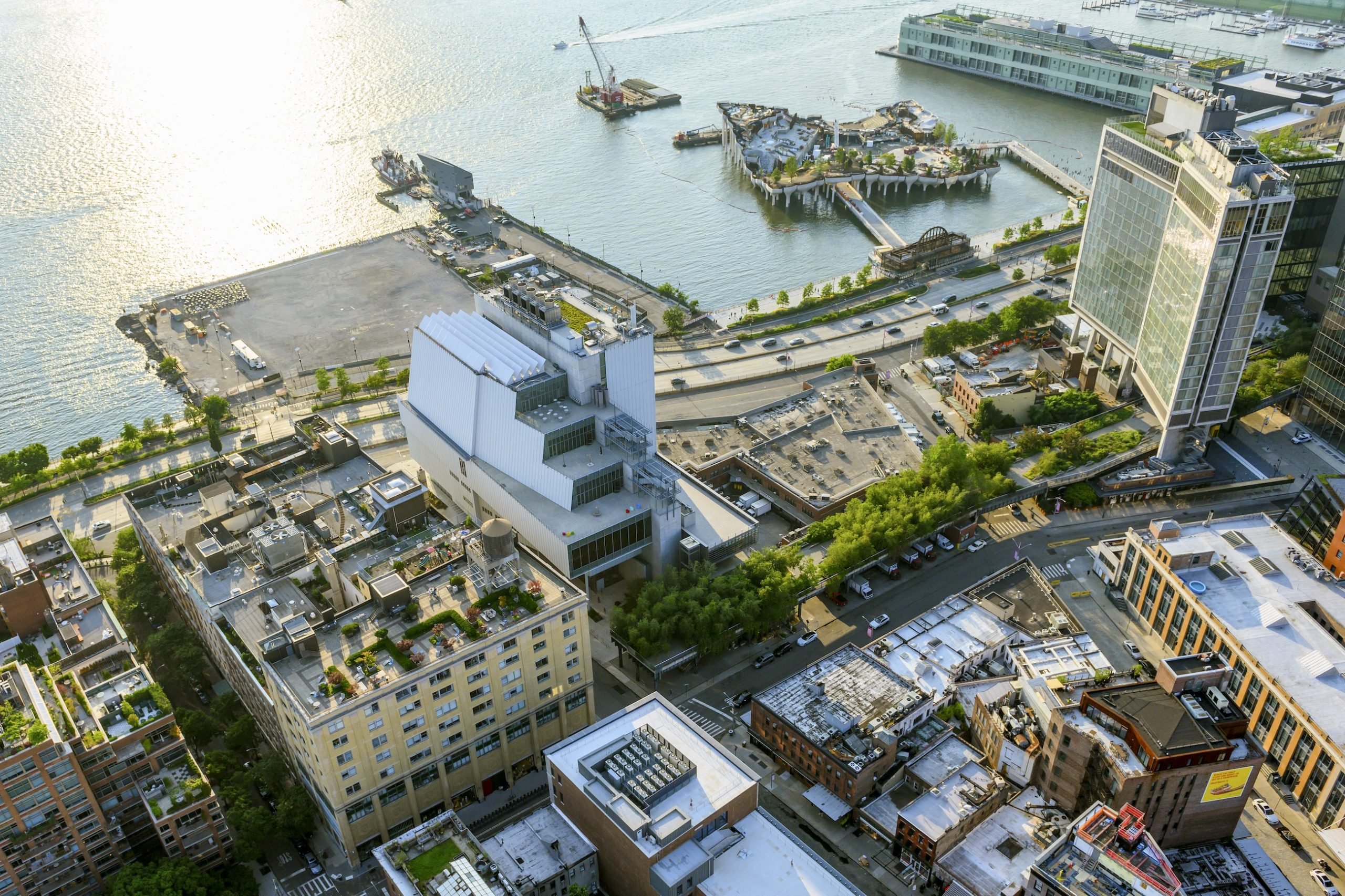
The neighborhood around the Whitney Museum of American Art in New York is still known as the Meatpacking District, for the businesses that were historically concentrated there. Formerly known as much for its processing industry as its after-hours activity, the area is now home to the chic Standard Hotel, art galleries, an Apple Store, the High Line, and luxury stores.
Now, the museum is eyeing real estate soon to be vacated by the last meatpackers who have held on to a space on Little West 12th Street between Washington Street and 10th Avenue. Seven businesses are leaving their facilities early.
The New York City Economic Development Corporation has revealed that the 66,000-square-foot area, as envisioned by Mayor Eric Adams, could include mixed-income housing, new public space, and “the opportunity to expand the Whitney Museum of American Art and the High Line,” as stated in press materials.
The Gansevoort Market stands amidst the Whitney Museum, right, the High Line, and, at left, the Standard Hotel, as viewed from the Hudson River. Courtesy New York City Economic Development Corporation (NYCEDC).
The space could include as much as 45,000 square feet of development beyond the housing and public space for the Whitney and the High Line. The museum has right of first offer on the site.
“The Whitney Museum is engaged in promising talks with the City and Friends of the High Line about a unique opportunity to expand onto a neighboring city-owned site, which would allow us to better serve artists and audiences from New York and around the world,” said Scott Rothkopf, director of the Whitney, in a statement.
As for those departing the site, John Jobaggy, president of Gansevoort Market, says in press materials that “the market building does not meet up-to-date standards for processing and distribution.”
The Whitney Museum of American Art. Photo: Nic Lehoux.
The museum moved downtown from its Upper East Side location in 2015, opening its Renzo Piano-designed new facility with 50,000 square feet of interior exhibition space plus 13,000 square feet on several outdoor terraces for display of sculpture. The fifth floor boasts an 18,000-square-foot column-free space, the largest such space in the city. While museum insiders were bullish on the new facility ahead of its opening, Artnet News critic Ben Davis was skeptical of what he called its “shock-and-awe tastefulness,” perhaps designed as much to seduce patrons as to display art.
The museum welcomed some 768,000 visitors in 2023, earning it a spot in the top 100 most-visited museums in the world (at number 89), even though attendance was still down some 26 percent from 2019, according to figures published by the Art Newspaper. It recently announced that admission would soon be free for those under 25, a year after raising its admission fee for adults to $30, or $25 for students and seniors, becoming the city’s most expensive museum ticket. It was the first increase in admission fees since 2016, and the museum cited “inflation, rising costs, and still-recovering attendance.” Admission is already free on Friday nights and the second Sunday of each month.